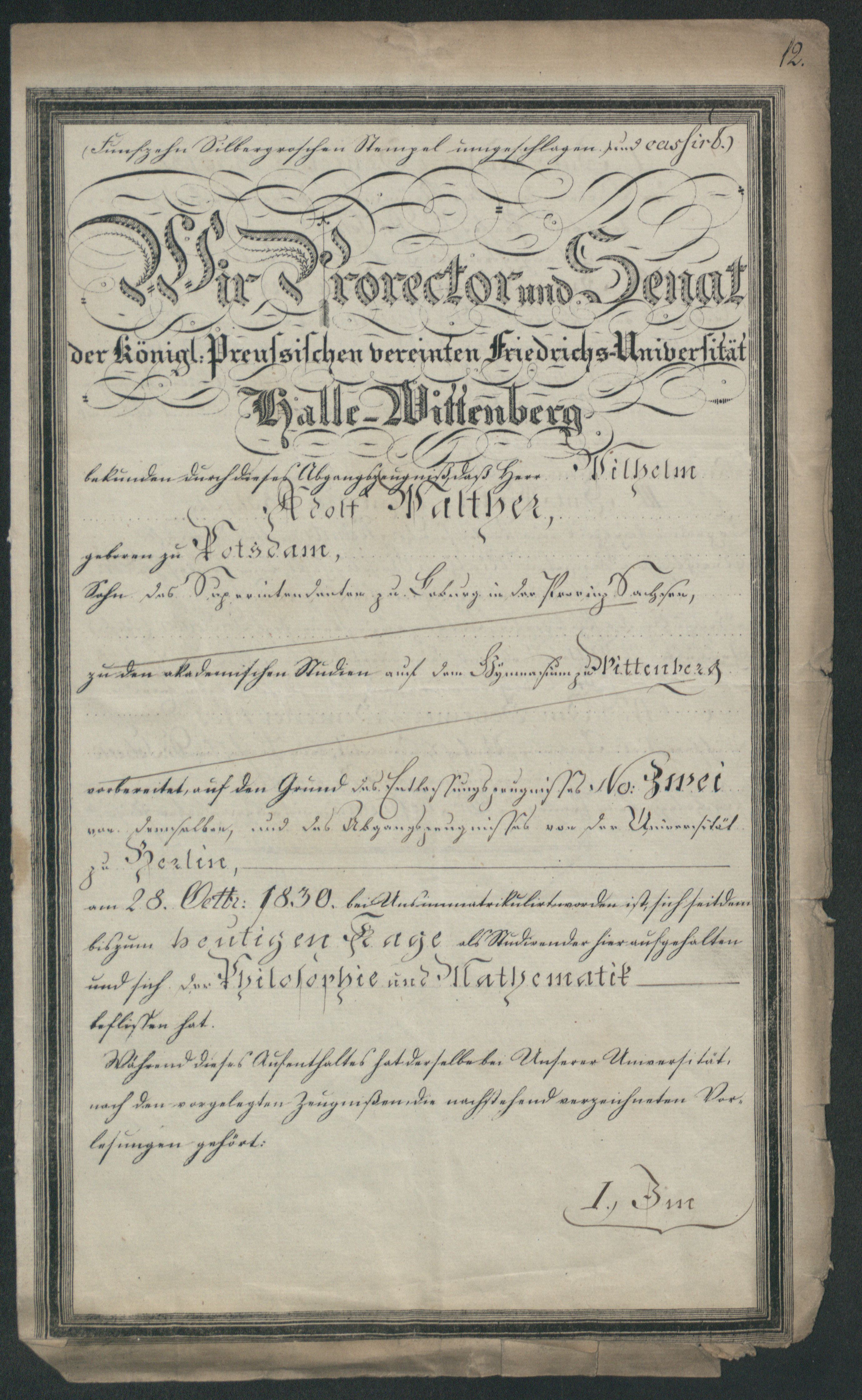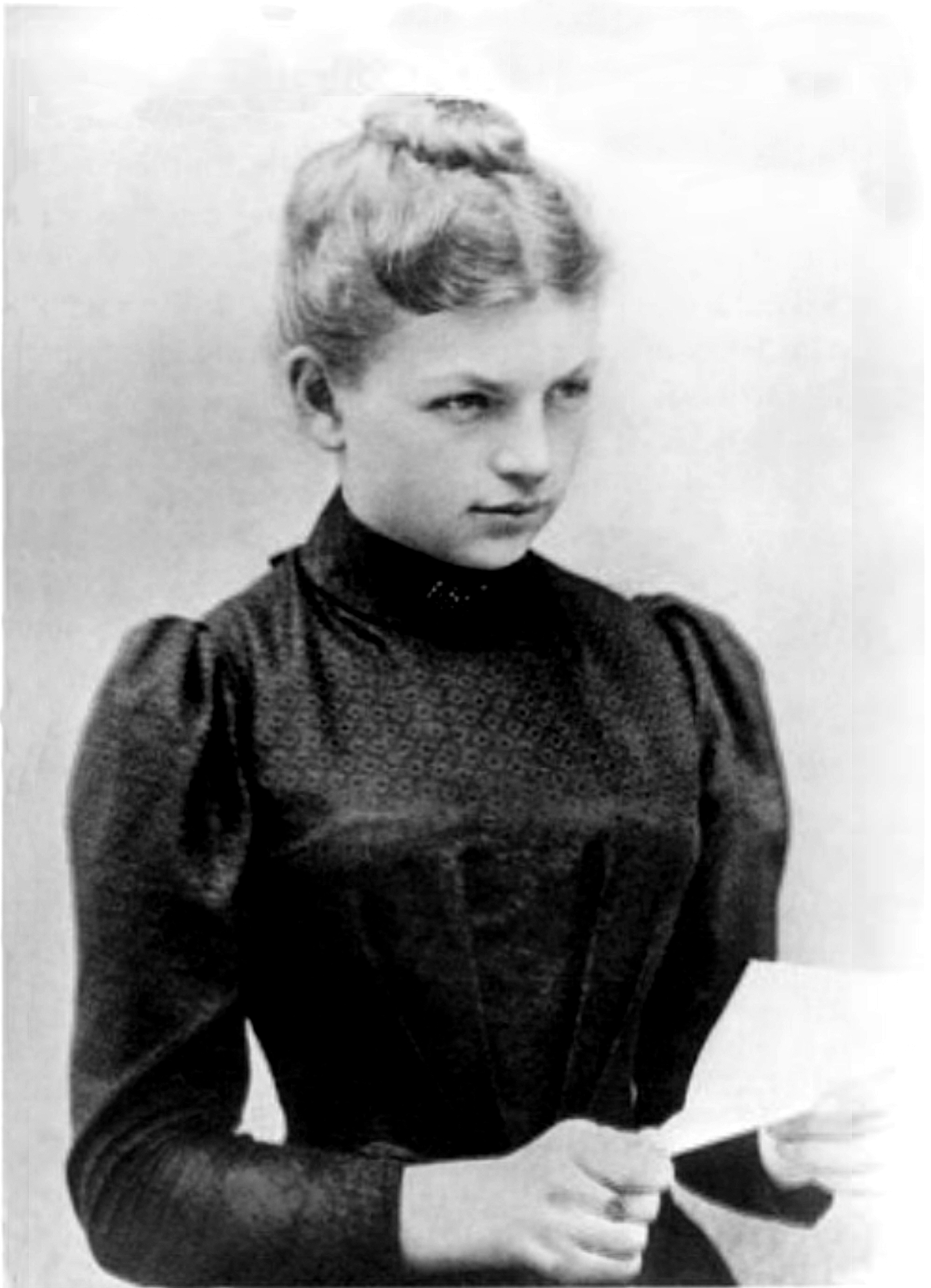|
Gustav Ludwig Hertz
Gustav Ludwig Hertz (; 22 July 1887 – 30 October 1975) was a German experimental physicist and Nobel Prize winner for his work on inelastic electron collisions in gases, and a nephew of Heinrich Rudolf Hertz. Biography Hertz was born in Hamburg, the son of Auguste (née Arning) and a lawyer, Gustav Theodor Hertz (1858–1904), Heinrich Rudolf Hertz' brother. He attended the Gelehrtenschule des Johanneums before studying at the Georg-August University of Göttingen (1906–1907), the Ludwig Maximilian University of Munich (1907–1908), and the Humboldt University of Berlin (1908–1911). He received his doctorate in 1911 under Heinrich Leopold Rubens.Mehra and Rechenberg, 2001, 197. From 1911 to 1914, Hertz was an assistant to Rubens at the University of Berlin. It was during this time that Hertz and James Franck performed experiments on inelastic electron collisions in gases, known as the Franck–Hertz experiments, and for which they received the Nobel Prize in Physics i ... [...More Info...] [...Related Items...] OR: [Wikipedia] [Google] [Baidu] |
Hamburg
Hamburg (, ; nds, label=Hamburg German, Low Saxon, Hamborg ), officially the Free and Hanseatic City of Hamburg (german: Freie und Hansestadt Hamburg; nds, label=Low Saxon, Friee un Hansestadt Hamborg),. is the List of cities in Germany by population, second-largest city in Germany after Berlin, as well as the overall List of cities in the European Union by population within city limits, 7th largest city and largest non-capital city in the European Union with a population of over 1.85 million. Hamburg's urban area has a population of around 2.5 million and is part of the Hamburg Metropolitan Region, which has a population of over 5.1 million people in total. The city lies on the River Elbe and two of its tributaries, the River Alster and the Bille (Elbe), River Bille. One of Germany's 16 States of Germany, federated states, Hamburg is surrounded by Schleswig-Holstein to the north and Lower Saxony to the south. The official name reflects History of Hamburg, Hamburg's history ... [...More Info...] [...Related Items...] OR: [Wikipedia] [Google] [Baidu] |
Hans Hertz (physicist)
Hans Martin Hertz, born 22 August 1955, is a Swedish physicist and professor at KTH Royal Institute of Technology. Biography Hertz was born in Lund, Sweden, to Carl Hellmuth Hertz and his wife Birgit Nordbring. He is the grandson of Gustav Ludwig Hertz and the great great nephew of Heinrich Hertz. His father was a professor in Physics at Lund University and his mother was a professor in microbial ecology. Hertz studied Engineering physics and received his doctorate in Atomic physics from Lund University 1988. After a postdoc at Stanford University he returned to Lund to create his own research group. In 1997 Hertz was appointed professor in biomedical physics at KTH Royal Institute of Technology in Stockholm. Between December 2013 and June 2018 he was Chair of the Board of MAX IV, the first 4th generation synchrotron in the world. Hertz was elected member of the Royal Swedish Academy of Sciences in 2007 and the Royal Swedish Academy of Engineering Sciences in 2008. In 201 ... [...More Info...] [...Related Items...] OR: [Wikipedia] [Google] [Baidu] |
Technische Hochschule
A ''Technische Hochschule'' (, plural: ''Technische Hochschulen'', abbreviated ''TH'') is a type of university focusing on engineering sciences in Germany. Previously, it also existed in Austria, Switzerland, the Netherlands (), and Finland (, ). In the 1970s (in Germany) and the 1980s (in the Netherlands), the ''Technische Hochschule'' emerged into the (German) or (Dutch). Since 2009, several German universities of applied sciences were renamed as . Terminology In German-language countries, the term ''Hochschule'' is more general than ''Universität'' (plural: ''Universitäten'') and also encompasses universities which do not have the right to confer doctorates and habilitations, in contrast to ''Universitäten''. Today, ''Universitäten'' as well as other ''Hochschulen'' call themselves ''Technische Hochschule'' for historical reasons. However, a ''Technische Hochschule'' with the status of a ''Universität'' is regarded as a ''Technische Universität'' despite the name. ... [...More Info...] [...Related Items...] OR: [Wikipedia] [Google] [Baidu] |
Martin Luther University Of Halle-Wittenberg
Martin Luther University of Halle-Wittenberg (german: Martin-Luther-Universität Halle-Wittenberg), also referred to as MLU, is a public, research-oriented university in the cities of Halle, Saxony-Anhalt, Halle and Wittenberg and the largest and oldest university in the German State of Germany, state of Saxony-Anhalt. MLU offers German and international (English) courses leading to academic degrees such as Bachelor of Arts, BA, B.Sc., BSc, Master of Arts, MA, M.Sc., MSc, Doctorate, doctoral degrees, and Habilitation. The university was created in 1817 through the merger of the University of Wittenberg (founded in 1502) and the University of Halle (founded in 1694). MLU is named after Protestant Reformation, Protestant reformer Martin Luther, who was a professor in Wittenberg. Today, the university campus is located in Halle, while ''Leucorea Foundation'' in Wittenberg serves as MLU's convention centre. Both Halle and Wittenberg are about one hour from Berlin via the Berlin–Ha ... [...More Info...] [...Related Items...] OR: [Wikipedia] [Google] [Baidu] |
Eindhoven
Eindhoven () is a city and municipality in the Netherlands, located in the southern province of North Brabant of which it is its largest. With a population of 238,326 on 1 January 2022,Statistieken gemeente Eindhoven AlleCijfers.nl it is the fifth-largest city of the Netherlands and the largest outside the Randstad conurbation. Eindhoven was originally located at the of the Domm ... [...More Info...] [...Related Items...] OR: [Wikipedia] [Google] [Baidu] |
Privatdozent
''Privatdozent'' (for men) or ''Privatdozentin'' (for women), abbreviated PD, P.D. or Priv.-Doz., is an academic title conferred at some European universities, especially in German-speaking countries, to someone who holds certain formal qualifications that denote an ability (''facultas docendi'') and permission to teach ('' venia legendi'') a designated subject at the highest level. To be granted the title Priv.-Doz. by a university, a recipient has to fulfill the criteria set by the university which usually require excellence in research, teaching, and further education. In its current usage, the title indicates that the holder has completed their habilitation and is therefore granted permission to teach and examine students independently without having a professorship. Conferment and roles A university faculty can confer the title to an academic who has a higher doctoral degree - usually in the form of a habilitation. The title, ''Privatdozent'', as such does not imply a sala ... [...More Info...] [...Related Items...] OR: [Wikipedia] [Google] [Baidu] |
Fritz Haber
Fritz Haber (; 9 December 186829 January 1934) was a German chemist who received the Nobel Prize in Chemistry in 1918 for his invention of the Haber–Bosch process, a method used in industry to synthesize ammonia from nitrogen gas and hydrogen gas. This invention is important for the large-scale synthesis of fertilisers and explosives. It is estimated that one-third of annual global food production uses ammonia from the Haber–Bosch process, and that this supports nearly half of the world's population. Haber, along with Max Born, proposed the Born–Haber cycle as a method for evaluating the lattice energy of an ionic solid. Haber, a known German nationalist, is also considered the "father of chemical warfare" for his years of pioneering work developing and weaponising chlorine and other poisonous gases during World War I, especially his actions during the Second Battle of Ypres. His work was later also used to develop Zyklon B, used for the murder of more than 1 mill ... [...More Info...] [...Related Items...] OR: [Wikipedia] [Google] [Baidu] |
James Franck
James Franck (; 26 August 1882 – 21 May 1964) was a German physicist who won the 1925 Nobel Prize for Physics with Gustav Hertz "for their discovery of the laws governing the impact of an electron upon an atom". He completed his doctorate in 1906 and his habilitation in 1911 at the Frederick William University in Berlin, where he lectured and taught until 1918, having reached the position of professor extraordinarius. He served as a volunteer in the German Army during World War I. He was seriously injured in 1917 in a gas attack and was awarded the Iron Cross 1st Class. Franck became the Head of the Physics Division of the Kaiser Wilhelm Gesellschaft for Physical Chemistry. In 1920, Franck became professor ordinarius of experimental physics and Director of the Second Institute for Experimental Physics at the University of Göttingen. While there he worked on quantum physics with Max Born, who was Director of the Institute of Theoretical Physics. His work included the Fra ... [...More Info...] [...Related Items...] OR: [Wikipedia] [Google] [Baidu] |
Ludwig Maximilian University Of Munich
The Ludwig Maximilian University of Munich (simply University of Munich or LMU; german: link=no, Ludwig-Maximilians-Universität München) is a public research university in Munich, Bavaria, Germany. Originally established as the University of Ingolstadt in 1472 by Duke Ludwig IX of Bavaria-Landshut, it is Germany's sixth-oldest university in continuous operation. In 1800, the university was moved from Ingolstadt to Landshut by King Maximilian I Joseph of Bavaria when the city was threatened by the French, before being transferred to its present-day location in Munich in 1826 by King Ludwig I of Bavaria. In 1802, the university was officially named Ludwig-Maximilians-Universität by King Maximilian I of Bavaria in honor of himself and Ludwig IX. LMU is currently the second-largest university in Germany in terms of student population; in the 2018/19 winter semester, the university had a total of 51,606 matriculated students. Of these, 9,424 were freshmen, while international ... [...More Info...] [...Related Items...] OR: [Wikipedia] [Google] [Baidu] |
Gelehrtenschule Des Johanneums
The ''Gelehrtenschule des Johanneums'' ( ''Academic School of the Johanneum'', short: Johanneum) is a Gymnasium (or Grammar School ) in Hamburg, Germany. It is Hamburg's oldest school and was founded in 1529 by Johannes Bugenhagen. The school's focus is on the teaching of Latin and ancient Greek. It is proud of having educated some of Germany's political leaders as well as some of Germany's notable scientists. The school is operated and financed by the city of Hamburg. History The Johanneum was founded by Johannes Bugenhagen, the spiritual representative of the reformer Martin Luther. In 1528 he came to Hamburg to give the city an Evangelical Lutheran church order, "the Erbarn Stadt Hamborch Christlike Ordeninge". On 24 May, 1529, the Johanneum first opened its doors in the building of the secularized old St. Johannis monastery, on the site of today's Rathausmarkt as the "Latinsche Schole". The actual school rooms were in half-timbered buildings in the inner courtyard of the mo ... [...More Info...] [...Related Items...] OR: [Wikipedia] [Google] [Baidu] |
Heinrich Rudolf Hertz
Heinrich Rudolf Hertz ( ; ; 22 February 1857 – 1 January 1894) was a German physicist who first conclusively proved the existence of the electromagnetic waves predicted by James Clerk Maxwell's equations of electromagnetism. The unit of frequency, cycle per second, was named the "hertz" in his honor.IEC History . Iec.ch. Biography Heinrich Rudolf Hertz was born in 1857 in , then a sovereign state of the , into a prosperous and cultured Han ...[...More Info...] [...Related Items...] OR: [Wikipedia] [Google] [Baidu] |






